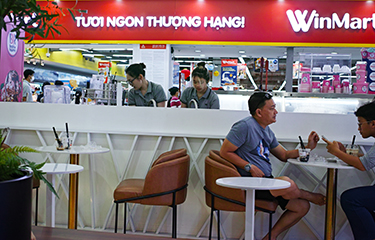Vietnam, the world’s largest producer and exporter of pangasius, has begun concentrating its sales pitch for its top fish export on a new market – its own.
With more than USD 2.4 billion (EUR 2.2) in export sales in 2022, pangasius was Vietnam’s number-two seafood export by value behind shrimp at USD 4.3 billion (EUR 4.1 billion). Most of the country’s pangasius is farmed in the Mekong Delta in southern Vietnam. Despite challenges, Vietnam’s 400 pangasius exporters have found fantastic success with the fish, and now send commercial volumes to over 140 countries, with the U.S., China, the E.U., and Japan serving as its top four markets.
However, with Vietnam’s General Department of Fisheries setting lower seafood production and export goals for 2023 amidst cooler global demand as a result of an inflationary cycle, the government and national pangasius sector have taken a new tack – teaming up to promote pangasius to the domestic market.
With a population of nearly 100 million and average annual GDP growth of 6.27 percent between 2000 and 2022, the purchasing power of Vietnam’s domestic market is quickly rising. In 2017, Vietnam’s Ministry of Agriculture and Rural Development kicked off a nationwide campaign to encourage Vietnamese citizens to prioritize the consumption of domestically produced goods, and as part of that campaign, the country’s government has been working with pangasius suppliers to host promotions through local supermarkets, mostly in northern Vietnam. The most recent event in the campaign took place in December 2022 in Dong Thap Province,
However, domestic sales of pangasius have thus far not materialized as the campaign’s participants had hoped.
In 2021, the most-recent year for which statistics are available, Vietnam’s Agriculture Ministry said domestic consumption accounted for 650,000 MT out of a total production figure of 1.6 million MT. But a recent study from Can Tho University’s Fisheries Department revealed 96.25 percent of pangasius raised in local farms was sent to regional processing plants in the region, with only 3.75 percent bought by local traders for sale to the domestic market. And of the total amount of product sent to processing plants, 94 percent was exported, with the remaining 6 percent sent to the domestic market.
Practically all pangasius raised at farms with eco-certifications was exported, with more than 99 percent of pangasius from GlobalG.A.P.-certified farms exported (including 90.71 percent sent to the U.S.). For Aquaculture Stewardship Council-certified farms, representing 4.53 percent of Vietnam’s total pangasius production, 9.54 percent went to Vietnam’s domestic market while 80.71 percent was shipped to the E.U. (the remaining 5.22 percent went to other markets). In farms that have been certified by VietG.A.P. and other schemes, 1.65 percent of the total production was supplied to the domestic market, with the remaining 98.35 percent sold to local plants for processing-for-export.
According to the Vietnam Association of Seafood Exporters and Producers (VASEP), growing local pangasius consumption has been a challenge because residents of southern Vietnam have plentiful access to other, fresh seafood alternatives, while northern Vietnamese residents also prefer to eat fresh fish over frozen products like pangasius fillets. Furthermore, most of the export-driven pangasius companies are finding it difficult to make new products that suit the range of tastes found across Vietnam's various regions.
Expensive transportation costs within Vietnam have also hurt the effort to supply more pangasius to the domestic market. Minh Phu, the country’s biggest seafood exporter, released its shipping rates in 2018, showing the cost of sending a container to the U.S. cost VND 41 million (USD 1,752, EUR 1,610), while sending a container by road from Ho Chi Minh City in southern Vietnam to Hanoi in the northern region cost VND 80 million (USD 3,417, EUR 3,146).
Despite the difficulties, one major retailer in Vietnam has committed wholeheartedly to the effort to push pangasius into the domestic market. WinMart, which is majority owned by the Masan Group, Vietnam’s top purveyor of consumer goods, saw its in-country pangasius sales grow by around 30 percent per year over the past three years. The company projects selling 400 MT of pangasius across its 3,200 retail supermarkets and convenience stores in Vietnam in 2023, up by 33.3 percent from its 2022 total. Along with Vietnam’s own growing population, WinMart expects to increase its number of locations to 5,000 outlets through 2023 and 8,000 by 2025. A WinMart official speaking at the pangasius event in Dong Thap confirmed the company remains committed to making pangasius available nationally as part of the larger promotional push.
Photo courtesy of Ryan Dinh/Shutterstock







